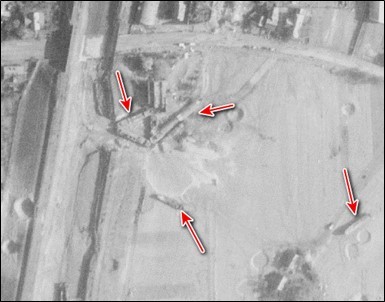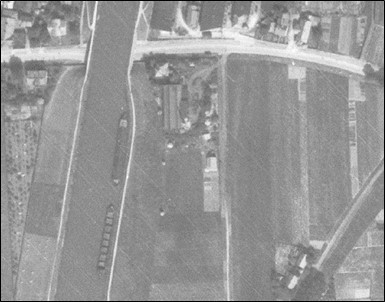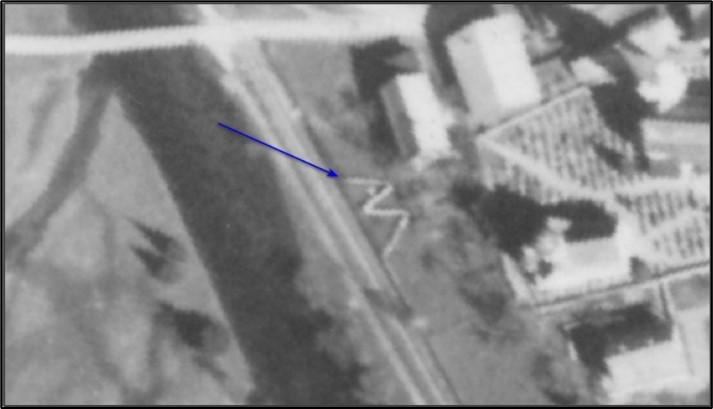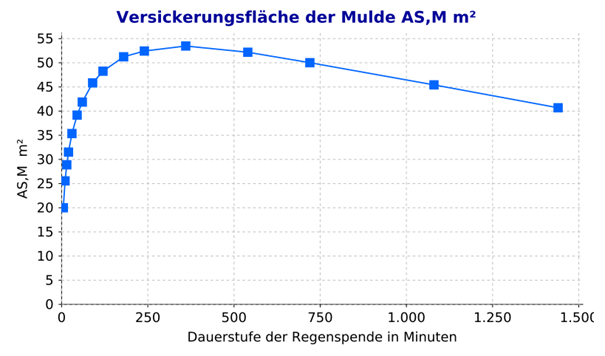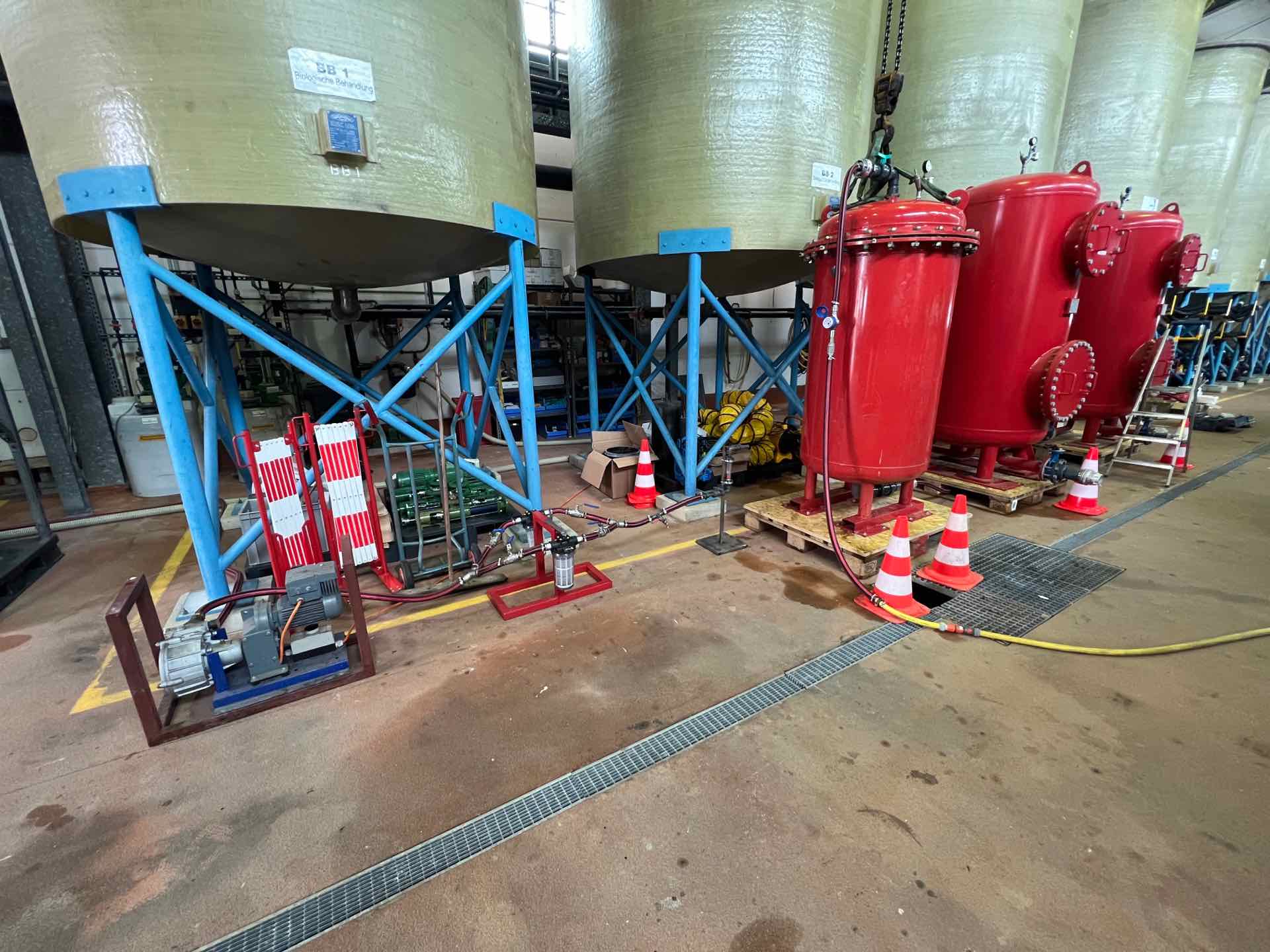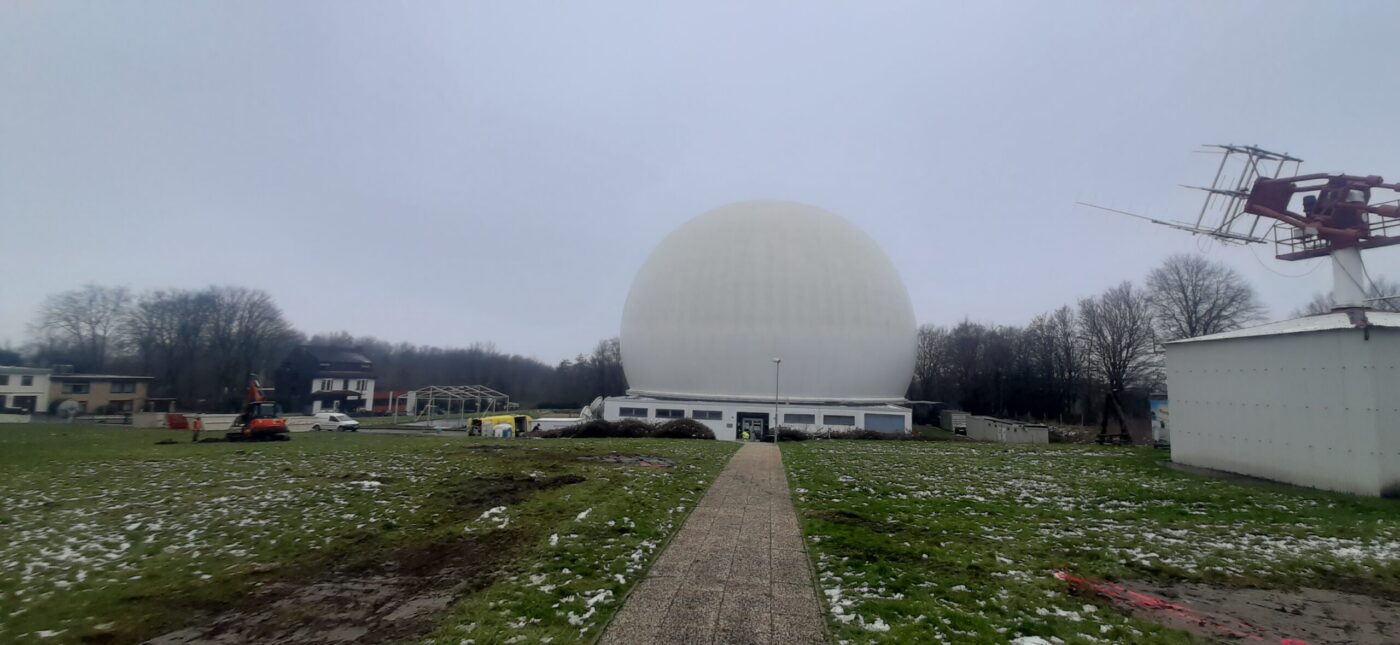Even more than 70 years after the end of the war, there are still numerous explosive ordnance items underground in the Federal Republic of Germany. These pose a considerable risk to the protection of public safety or public order. In addition to written sources, historical aerial photographs in particular are an essential medium for the reconstruction and spatial delimitation of areas potentially contaminated by ordnance.
When analysing aerial images, there are always new, unknown or even curious things to discover in addition to the familiar image content such as bomb craters or positions. This type of image content, some examples of which are presented below, also causes astonishment, initial confusion or, at best, amusement in the everyday work of the "professionals" at Mull und Partner.
A rare example is the photograph shown in Figure 1 of an aircraft flying at a lower altitude than the "camera aircraft", which was captured as an "accessory" in the course of the photographic reconnaissance. The star marking on the wing identifies it as a US aircraft. The type of aircraft is also easily recognisable to the expert - it is a Republic P-47 Thunderbolt, a single-seat fighter aircraft of the USAAF, which was generally used as a low-flying aircraft in tactical air attacks (this also explains the comparatively low altitude).
The next example (Figure 2) presents an initially confusing picture: cargo ships (marked in red) lie in the middle of a field criss-crossed by bomb craters?
The solution to this "riddle" lies in looking back (see Figure 3): The comparison with this older picture shows a canal in which several ships are visible (on the left of the picture). The canal was apparently damaged during an air raid, and the leaking water swept several ships through the resulting opening. The freighters then came to rest on the neighbouring fields (see Figure 2). This example vividly demonstrates that a direct comparison with previous images often clarifies initially "confusing" aerial image findings. It once again demonstrates the necessity of multi-temporal image observation. It also reminds us of the fact that interactions between the environment and the effects of war can also take place.
Sometimes the point of an aerial photograph is not to be found in the photo itself, but at the edge. Here (see Figure 4), a (presumably) unwanted guest was immortalised in the image during reproduction (scanning or copying).
Another unusual structure with a clearly visible "zig-zag pattern" is shown in Figure 5. The basic shape initially shows a fundamental similarity to the frequently encountered cover trenches, which are usually also laid out in a "zig-zag shape" in order to improve their protective function. However, in this case - as the stereoscopic examination of the aerial images revealed - it is not a hollow but a solid shape; so perhaps a low wall instead? The experts from the aerial image analysis team came to the obvious conclusion that, taking into account the parameters of shape, structure, dimensions and proportions, the object in question was in all probability a very harmless object - a washing line! The photo obviously shows the space-saving "M-shaped" line with textiles such as clothing, blankets or sheets hung close together, which from the air initially look like a kind of wall to the observer.
Finally, an example that makes it clear that even familiar structures can cause confusion in aerial photographs - here (Figure 6) a large white cross is visible on a field. During the war, Red Cross symbols were used to mark hospitals, hospital trains and similar medical facilities to protect them from air raids. In this case, however, no suitable facility could be found in the vicinity, although the cross depicted is enormous in size (to compare its size, look at the buildings in the immediate vicinity of the cross).
This leaves some room for speculation; the functional background of the cross cannot be determined on the basis of the aerial photograph alone. Nevertheless, we all know since the film Indiana Jones and the Last Crusade (1989): "Never before has a X somewhere, sometime marked a significant point".
Especially with this important wisdom in mind, it becomes clear that aerial photo analysis is also detective work in which every clue is followed up. Because every piece of the puzzle in the reconstruction of the war helps to improve the decision-making basis for the user.

